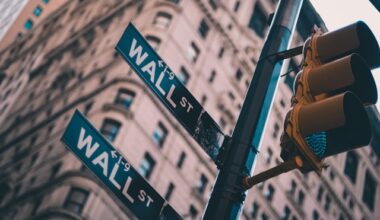Why the “high-yield online bank” move matters now
If you’ve got savings sitting at a traditional bank earning next to nothing, you might be asking: should I move my money to a high-yield online bank before 2026? The short answer: maybe yes — but it depends. With interest rates higher than what we’ve seen for years, online banks are offering compelling savings rates. At the same time, there are caveats (variable rates, accessibility, insurance limits, etc.). In this post we’ll unpack what “moving your money” really means, why the timing before 2026 matters, what you should check, and whether the move is right for you.
What is a high-yield online bank?
Before we go deeper, let’s define what we mean by a high-yield online bank and why they tend to offer better savings rates.
- A high-yield savings account (HYSA) is a bank deposit account that offers an Annual Percentage Yield (APY) significantly above the national average for savings accounts.
- An online bank (or online branch of a bank) means the institution operates digitally (remote account opening, no or few physical branches), which typically allows lower overhead costs — enabling higher rates to customers.
- Put together: a high-yield online bank is a digital bank (or digital savings product) offering above-average APYs on savings deposits.
Why the emphasis on “online”? Because many of the best-rate HYSAs today are offered by banks with little or no branch footprint, allowing them to pass cost savings to you.
Why consider moving your money before 2026?
Timing matters. Here are several reasons why now (or soon) might be a good window:
- Relatively high rates: As of late 2025, top online HYSAs are offering rates around 4 % or more. For example, one list cites up to 4.51% APY. (NerdWallet)
- Rates may trend downward: Several commentators note that as central banks begin cutting benchmark rates or as inflation falls, deposit rates could come down. (MarketWatch)
- Opportunity cost of staying with a traditional bank: Many legacy banks still pay very low rates (0.01 %-0.10 % in some cases) for savings. So your money may be “sleeping”.
- Liquidity, flexibility, safety: If you pick a good online HYSA, you get access and FDIC insurance, meaning you’re not locking money away (as you might with long-term CD) but you still earn more.
- Setting the habit: If you move now, you’ll benefit for the next several years — through 2026 and beyond — giving your money more runway.
In short: If you have savings you’re not actively using, moving them into a higher-yield but safe vehicle now may give you a better return over the next year(s) than waiting.
What you’ll gain — the benefits of a high-yield savings account
Let’s summarise the advantages:
- Higher growth: With rates around 4 % vs maybe 0.1 % in a traditional bank, your money earns more. For example — one article calculated $50,000 at 4.35% yields ≈ $2,175 in a year. (CBS News)
- Low risk: Many online HYSAs are FDIC-insured (in the U.S.) up to the standard limit (typically $250,000 per depositor, per category).
- Flexibility: Unlike long-term commitments (e.g., some CDs or bonds), you usually can make deposits and withdrawals (within limits).
- Convenience: Easy to open online, manage via app, check rates, move funds, etc.
- Liquidity: Good for emergency fund, short-term goals, while still earning more.
What you’ll risk — the drawbacks and things to watch
It’s not all perfect. Here are the caveats:
- Variable interest rates: The APY is not locked in indefinitely. The bank may reduce it in the future.
- Accessibility restrictions: Some accounts still limit the number of withdrawals per month (e.g., regulatory limit of six for certain savings accounts in the US) or impose fees.
- Coverage/Insurance: Need to ensure your deposits are fully insured (e.g., FDIC in USA, CDIC in Canada) and you don’t exceed coverage thresholds.
- Opportunity cost: While HYSAs beat traditional savings, they may under-perform other asset classes (stocks, bonds) in periods of higher risk tolerance. If you don’t need the money immediately, other vehicles might yield more.
- Bank stability / service model: Online banks may have fewer physical branches and sometimes less face-to-face service. Some people may value that.
- Currency/regional issues: If you’re not in the U.S., or you deal with foreign currency or local banks, the dynamics may differ. (Note: you are in Nigeria, so local regulatory/insurance context will matter.)
How to evaluate an online high-yield savings bank
Here are the checklist items you should run through before you move your money.
Key criteria:
- Is the bank insured by the relevant authority (e.g., FDIC in the U.S., NCUA or CDIC depending on region)?
- What is the APY being offered? Compare against the national average. For instance, top HYSAs were offering ~4 %+ in late 2025.
- Are there any minimum deposit/balance requirements or monthly fees? Some banks waive fees, others don’t.
- What are the withdrawal or transfer limits/penalties? Especially if you might need the funds.
- How is customer service, online/app interface, ease of transfers? If you move money away from your main checking bank, ease matters.
- What happens if the rate drops? Since these are variable-rate products, you should assume the APY may decline in future.
- Does the bank have any locking in conditions, promotional rates that will revert after a certain period?
- If you’re outside the U.S. (as you are in Nigeria), consider local equivalents: Are there local online banks offering high yields and local deposit insurance? Or will you open a U.S. account (which may bring regulatory, tax, and forex implications)?
- Consider the currency/exchange rate risk: If you earn in USD but live in another currency, FX fluctuations matter.
Current snapshot of high-yield savings rates
Here’s a quick table summarising where things stand circa late 2025. This helps you weigh how attractive moving now is.
| Provider / Source | Approximate APY | Notes |
|---|---|---|
| Top online HYSAs (U.S.) | Around 4% – 5% (4.2%-4.5% common) (NerdWallet) | Variable rate, online-only banks |
| National average (savings) | ~0.40% (traditional banks) (NerdWallet) | Many legacy banks still low |
| Example: $50,000 savings @ 4.35% | ~$2,175 earnings in one year (CBS News) | Illustrative for scale |
Interpretation: The gap between a traditional savings rate (~0.4%) and an online HYSA (~4%) is large. If you’re parking funds for a year or longer and need access, the difference adds up.
Should you move your money to a high-yield online bank before 2026?
Now let’s apply the context to you — your financial situation, risk preferences, timeline.
Questions for you to ask:
- Do you have funds in a low-yield savings account that you don’t need for immediate use?
- Are you comfortable managing transfers, dealing with a separate bank if needed?
- Do you need the funds to be accessible (for emergencies, projects, business)?
- Are you okay with variable rates (i.e., potential reversal of rates later)?
- Are there currency/region issues (since you’re in Nigeria) that influence where and how you do this?
- Would you prefer to keep everything under one banking roof (ease) or are you okay splitting your savings into a high-yield online bank separately?
My verdict:
If I were advising you (based on what I know from the research and given your goals to maximize reward), I’d lean towards yes, you should strongly consider moving money into a high-yield online bank before 2026, provided:
- The funds are not needed imminently for emergencies (so you’ll benefit from the extra yield).
- You pick a well-insured, reputable online bank with no hidden fees and good access.
- You’re okay that the rate may drop in the future (so treat the extra yield as a “bonus” rather than guaranteed forever).
- You verify the local/international banking implications (since you are in Nigeria → consider any tax, forex, transfer cost, minimum deposit, etc).
If, however, your funds are needed soon, you’re uncomfortable branching out to a separate bank, or you have significant foreign currency/transfer issues, you might hold off — or move part of your money now, rather than all of it.
Practical steps to make the move
Here’s a step-by-step guide to doing this smoothly:
- Audit your current savings account(s)
- What is the APY you’re earning currently?
- Are there minimum balance fees or withdrawal restrictions?
- How much of the balance is “idle” (i.e., funds you don’t use in next 12-24 months)?
- Research a shortlist of high-yield online banks
- Compare APYs, fees, ease of transfers, reviews.
- Ensure deposit insurance (e.g., FDIC up to $250k in U.S.).
- Check foreign/cross-border implications if relevant.
- Decide on how much to move
- You might start with a portion of your savings rather than everything.
- Think of a “buffer” for your checking account to cover unexpected withdrawals.
- Open the account & transfer
- Set up online, link your current bank for transfer.
- Enable auto-transfer (optional) to build savings.
- Confirm when the account starts earning the higher rate.
- Monitor regularly
- Check the APY periodically (rates may change).
- Keep your savings goal in mind. If your need changes (e.g., you’ll need the funds for a capital project), you may reconsider.
- Have an exit plan or diversification plan
- If rates fall significantly or you need to deploy the funds (investment, business, etc.), consider what you’ll do next.
- Maybe keep some in the HYSA and move some into higher-risk/higher-yield assets as your risk tolerance allows.
FAQs on moving money to a high-yield online bank
Q: Will my rate stay at 4%+ indefinitely?
A: No. These are variable-rate accounts. Banks can reduce the APY when market conditions change. That’s why acting earlier (while rates are “good”) can help.
Q: Is it safe? Could I lose my principal?
A: If you pick an insured bank (e.g., FDIC in U.S.) and stay under the insurance limits, your deposits are safe from bank failure. The risk is more about the rate falling rather than the principal being lost.
Q: How quickly can I access my money if needed?
A: Usually quite quickly (online transfer). But note that some savings accounts may limit the number of free withdrawals per month or impose small fees. Always check the terms.
Q: What about taxes or foreign currency if I’m outside the U.S.?
A: That’s important. If you open a U.S.-based account while you reside in Nigeria (or use a local online bank with high yields), you’ll want to check:
- What tax reporting you must do (interest earned may be taxable).
- How currency conversion and transfer fees may affect your net return.
- Whether your local banking regulations allow or favour foreign-based bank accounts.
It may be prudent to consult a local tax or banking advisor.
Q: Should I keep everything in this online HYSA, or just part of my savings?
A: Splitting is a valid strategy. You might keep:
- A “core” emergency fund in the HYSA to earn more.
- Another portion in more liquid cash or local bank, in case you need immediate access without international transfer delays.
- Another portion invested in other assets (if you have longer-term goals and higher risk tolerance).
The bottom line
If I were to sum it up: yes — moving your money to a high-yield online bank before 2026 is a smart move for many savers, provided you do it thoughtfully. The opportunity is strong: rates are relatively elevated, the gap between traditional and online savings is large, and the ease of doing the move is greater than ever. On the flip side, variable rates and the logistics (especially across borders) require care.
Why Life Insurance Costs Will Skyrocket in 2026 — What You Must Do Right Now
Is Your Auto Insurance Secretly Watching You? The Spy Tech Silently Increasing Your Premiums




